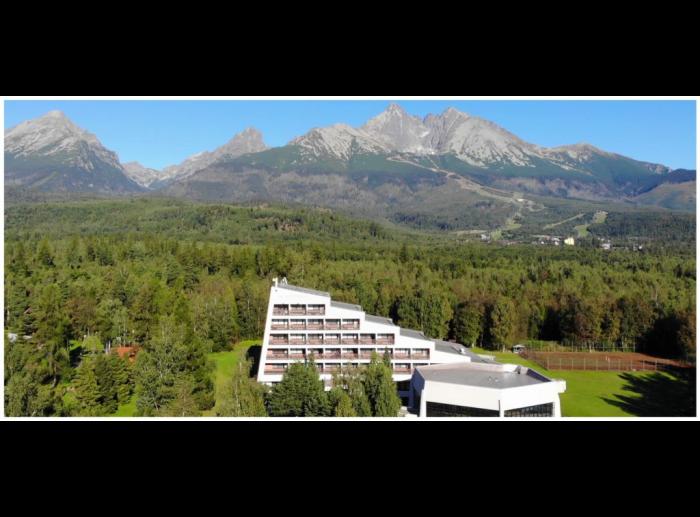
From 1 to 3 June 2022, the 38th Symposium "On Mining and Environmental Geophysics" was held at the Congress Center of the Slovak Academy of Sciences in Stará Lesná (High Tatras, Slovakia). The tradition of these meetings dates back to 1970, when the first symposium was organized by Polish colleagues in Karpacz. Changes in the approach to mining and a greater emphasis on environmental issues gradually completed the symposium in its current form. Currently, the symposium period is two years with regular rotation of the organizing organization from the Czech Republic, Slovakia and Poland.
This year's event was organized by our Slovak colleagues, namely "Department of Engineering Geology, Hydrogeology and Applied Geophysics, Faculty of Sciences, Comenius University in Bratislava, Slovakia and Institute of Geosciences, Faculty of Mining, Ecology, Process Control and Geotechnologies, Technical University in Košice, Slovakia '. The organizing committee was chaired by prof. RNDr. Roman Pašteka, PhD., Was also represented by RNDr. Bibiána Brixová, Ph.D., Mgr. Ema Nogová and Mgr. Erik Andrássy. The Scientific Committee worked under the leadership of prof. RNDr. Miroslav Bielik, DrSc., Its members were Prof. Dr. Zdenek Kalab PhD., RNDr. Vladimir Rudajev, DrSc., Doc. RNDr. Jan Vilhelm, CSc., Ing. Milan Broz, CSc., Doc. RNDr. Pavel Pospisil, Ph.D., prof. dr.hab. Wacław Zuberek, prof. dr.hab. Adam Idziak, prof. RNDr. Blažej Pandula, CSc., Prof. Ing. Stanislav Jacko PhD., Doc. RNDr. Andrej Mojzes, PhD. and doc. RNDr. René Putiška, Ph.D.
Of course, several contributions more or less touched on the EPOS project. Here I will recall the contribution of Polish colleagues Rudzinskéko, Lasockého, Orlety-Sikora, Kocota, Lesnodorské and Leloneka entitled An open data infrastructure for the study of anthropogenic hazards related to the exploitation of georesources as part of the European Plate Observing System (EPOS).
The conference was attended by about 50 participants from scientific institutions, universities and operational organizations. 29 papers were submitted and 11 posters were presented (abstracts can be found on the website of the organizing department https://www.kaeg.sk). The symposium also included a professional excursion to the Belianská Cave. We can find this basic information on the website: “Belianská Cave was created by corrosion and erosion activities of glacier waters and precipitation in the limestones of the Belianske Tatras. Already in 1731 it was probably visited by gold diggers, it was discovered in 1881 and opened to the public a year later, making it one of the oldest accessible caves in Slovakia. In 1979 it was declared a National Natural Monument. The total length of the cave is 1752 meters, 1275 m of corridors are accessible. The average temperature in the cave is + 5.2 ° C. In the richest decorated cave of the Tatras we find stalactite decoration and underground lakes. ”In addition to" cave experiences ", I have one extra experience - a memory of more than 800 steps in the cave system, which must be completed during tour!
If I can summarize the symposium, it always had a high professional level, which was also reflected in the "beautiful long discussions". Many thanks to the organizers for a well-organized event. And we can already look forward to another symposium in two years in Poland.